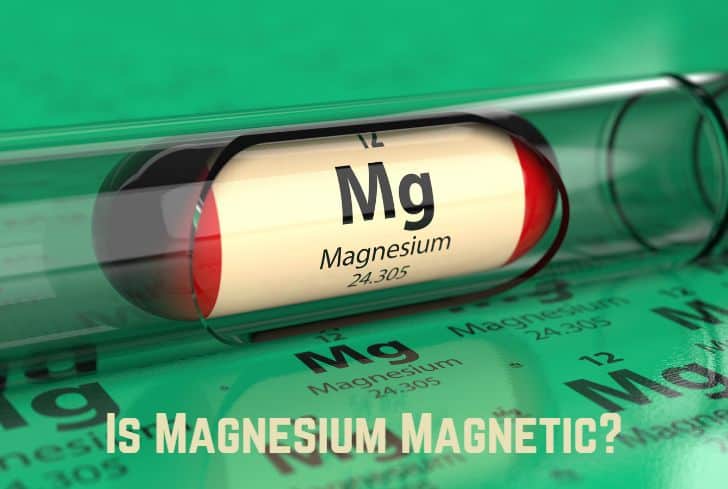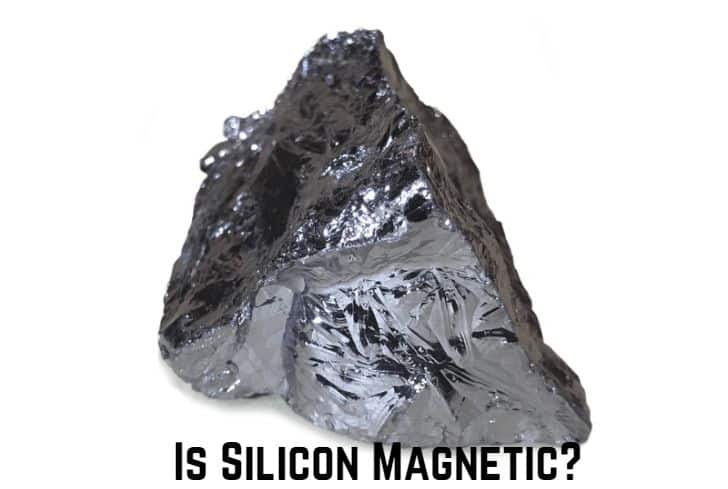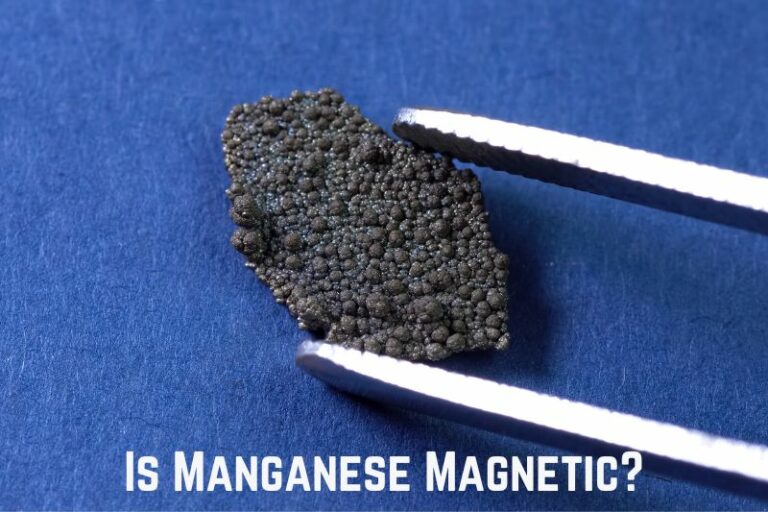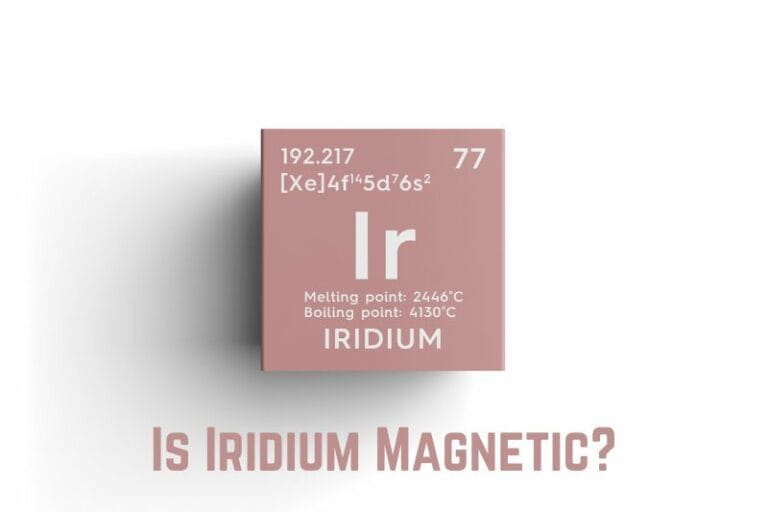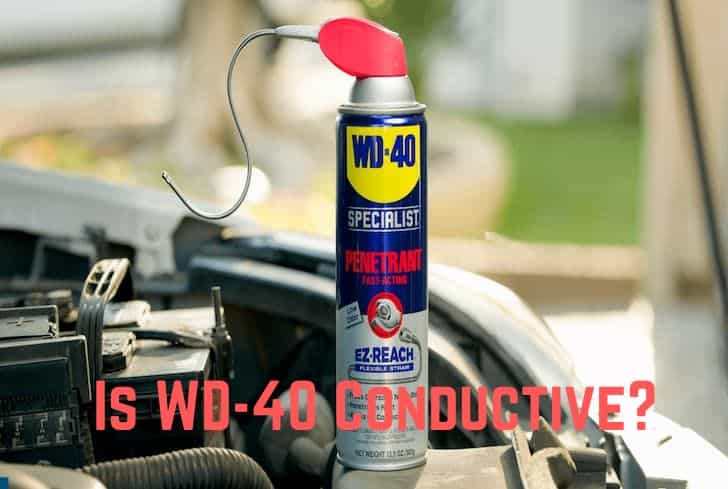Is Copper Magnetic? (No…)
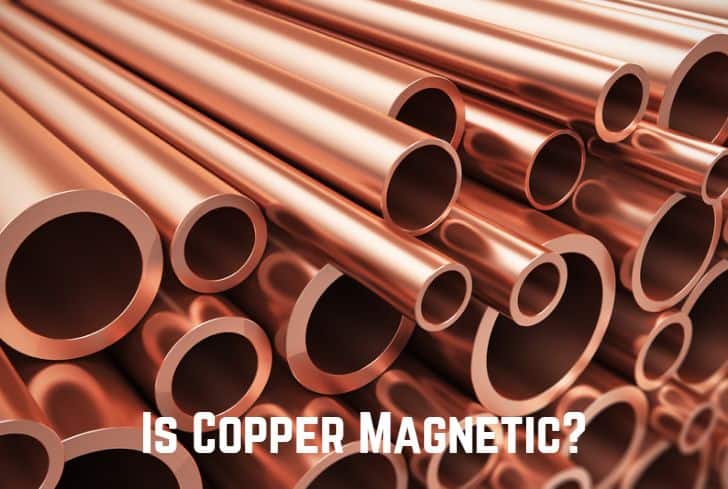
Copper (Cu) is a chemical element with the atomic number 29. It is a soft, malleable, and ductile metal that has excellent thermal and electrical conductivity. Copper is one of the oldest metals known to man, with its uses dating back to ancient civilizations like the Egyptians & Greeks.
Today, copper is widely used in various industries, including construction, electronics, and transportation. Have you ever wondered if copper is magnetic? In this article, we are going to discuss just that. We will also look at the properties and uses of copper.
Is Copper Attracted to Magnets?
No, copper is not magnetic in normal settings. However, it does interact with magnets due to the formation of electrical eddy currents. This property is used in various applications, such as the generation of electricity.
Let us first try to learn what magnetism is. Magnetism is a force caused by the motion of electric charges. Every substance is made up of atoms. These atoms have electrons (particles that carry an electric charge) that circle the atom’s center, called the nucleus.
In some substances like iron, electrons spin in the same direction. This allows their magnetic fields to combine and produces a magnetic field extending beyond the atoms. These objects are strongly attracted to magnets and are called ferromagnetic.
However, in most substances, equal numbers of electrons spin in opposite directions. This cancels out their magnetism, and they are not attracted to a magnetic field. These include things like paper, cloth, wood, etc., and are called diamagnetic.
Copper has 29 electrons, having an electronic configuration of 1s²2s²2p⁶3s²3p⁶3d¹⁰4s¹. The 10 electrons in the d shell are combined in five pairs. On pairing up, the electrons spin in opposite directions and effectively cancel out their magnetism.
Therefore, copper is a weakly diamagnetic material, meaning that it is weakly repelled by an externally applied magnetic field. However, despite its non-magnetic nature, copper interacts with magnets in an interesting way, as we will discuss below.
Will a Magnet Stick to Copper?
No, a magnet will not stick to copper. However, copper still interacts with the magnet because of electrical eddy currents, and this interaction is based on the Lenz Law. It is useful in various applications, such as electricity generation.
If you put iron fillings along with copper coins and bring a strong magnet near them, you will see that the magnet attracts the fillings but not the coins. However, when a magnet and copper are moving near each other, something interesting happens.
Electricity & magnetism are closely linked: whenever a magnet moves near a metal, it generates electrical eddy currents. If you take a thick copper tube and let a magnet fall down it, you will notice that the movement of the magnet is slowed down—it almost appears to float.
This happens because the movement of the magnet generates eddy currents, which have their magnetic field. Their magnetic field is in the opposite direction of the field around the magnet and therefore repels it.
This repulsion pushes against the magnet, slowing down its fall and making it look as if it is floating. This phenomenon is also visible if you slide a magnet down a copper bar: the magnet will considerably slow down due to the opposing magnetic field.
Such processes are used in elevators and roller-coasters, which need to be slowed down at times. A shake-light also works using this phenomenon: when you shake the light, the magnet moves around copper and generates electricity.
The same phenomenon takes place on a larger scale in power plants, where it helps to generate electricity. So, while copper does not get attracted to magnets, it interacts with them in interesting ways, and this has various practical applications.
Is Copper Alloy Magnetic?
The magnetic nature of copper alloys depends on their composition and microstructure. Some alloys are magnetic, such as cupronickel, are magnetic. Others, such as brass, are generally not magnetic.
An alloy is a material that is made by combining two or more metallic or non-metallic elements. It often has properties that are different from the individual constituents, for example, improved strength or corrosion resistance.
Brass is an alloy of copper and zinc. Zinc is not a magnetic material, and its addition to copper does not significantly add any magnetic properties to the alloy. Therefore, it is a non-magnetic material.
Similarly, bronze is an alloy of copper and tin. Since tin is non-magnetic, the alloy is also non-magnetic. However, some copper alloys are magnetic. For example, cupronickel.
Cupronickel is a copper-nickel alloy containing a significant amount of nickel. Since nickel is a ferromagnetic material, it brings magnetic properties to the alloy. Therefore, the alloy is also magnetic, although its magnetism depends on the amount of nickel and its microstructure.
How to Tell if an Item Uses Real Copper?
You can use the following methods to determine if an item uses real copper:
- Copper stamp or hallmark: Most copper items, especially those made by reputable manufacturers will have a stamp or hallmark saying that the item is made up of copper. You can look for words like “copper,” “solid copper,” or “copper alloy.” on the item. Antique copper items may also have a manufacture date on the stamp.
- Color: Copper has a distinctive reddish-brown color which is difficult to imitate with other metals. This warm, reddish-brown hue should help you identify real copper. If the color looks too shiny or too dull, it could be a sign that the item is not genuine; it might be made of a different metal or have copper plating.
- Weight: Copper is quite a heavy metal. So, check if the item feels heavy enough for its size. If the item is too light, it might be made up of brass or bronze, not copper.
- Conductivity: Copper is an excellent conductor, which is why it is widely used in electrical applications. You can do a conductivity test with a multimeter or a simple continuity tester to determine if it’s real copper. Touch one probe of the tester to your item and the other probe to a known copper wire. If the tester shows continuity, it means the item is made of real copper.
- Chemical test: Copper has specific chemical properties. For example, it reacts with vinegar or lemon juice to produce a greenish tarnish. You can use this to check its authenticity. Put a small amount of vinegar or lemon juice into a hidden part of the item and see if it produces a greenish tint.
Uses of Copper
- Electrical appliances: Copper is one of the most conductive metals, and it is widely used for electrical wiring in buildings, homes, and industrial applications. It is also used to make electronic components (microchips, connectors, etc.)
- Plumbing: Due to its corrosion resistance and good thermal conductivity, copper has also been used in plumbing for centuries.
- Construction: Copper is used in roofing, gutters, and flashing. Besides its durability and resistance, its aesthetic appeal is valued in the construction industry.
- Currency: For thousands of years, copper has been used as a current. It is still used in some countries today.
- Antimicrobial applications: Copper has antimicrobial (ability to kill harmful microorganisms) properties. This has been recognized for thousands of years, and copper has been used in the preservation of water, food, medicine, etc.
Properties of Copper
- Color: Copper has a distinct reddish-orange color. Its beauty makes it a popular choice for decorative objects and architectural features. Over time, copper can also develop a green patina. This is because the copper oxide layer reacts with the environment to form copper carbonate and copper sulfate. This green color adds to copper’s aesthetic appeal.
- Conductivity: Copper is an excellent conductor of electricity, second only to silver. It has low electrical resistance, which makes it an ideal material for electrical wiring and components. Copper is also a great conductor of heat, which is why it is used in heat exchangers and other applications requiring heat transfer.
- Ductility & Malleability: Ductility is the property of a material drawn into thin wires without breaking. Copper has great ductility, which makes it perfect for electrical wiring, as well as for manufacturing pipes and tubing. Copper is also malleable, meaning that it can be beaten into sheets.
- Corrosion Resistance: Copper is a highly resistant metal. This is because, when exposed to air, a thin layer of oxide forms on its surface. This layer is known as copper oxide (Cu2O), and it acts as a barrier that prevents further oxidation and corrosion.
- Recyclability: Copper is one of the most recycled metals in the world, with a recycling rate of around 90%. The recycling process involves collecting and sorting scrap copper, melting it down, and then refining it to remove any impurities. The resultant is pure, which copper can then be used to make new products.
Conclusion
In this article, we discussed the magnetism of copper. Copper is itself not magnetic, although it does interact with magnets, which can be used for various applications. We also looked at the properties & uses of copper. Finally, we also briefly talked about its authenticity & alloys.

